Under-the-radar Ireland: what to do on the Copper Coast
Everyone raves about the Wild Atlantic Way, but southern Ireland’s Copper Coast has so far dodged the spotlight. Tour its quiet roads and you’ll find a savagely beautiful coastline that has been hammered into shape by raw elemental forces over millennia and is now the focal point of a UNESCO Global Geopark.
Why go to Ireland's Copper Coast?
The winds and waves of the Celtic Sea batter the cliffs, coves, rock stacks and seaweed-ensnared beaches of the Copper Coast in County Waterford. It’s a wild corner of southern Ireland, defined by the tides and geological formations that point back to a time when dinosaurs roamed the earth. Here, where the briny breezes hit you like a slap in the chops, you’ll find a raw, unedited slice of Ireland that has somehow evaded the tourist radar.
On paper the coastline seems small: reaching for just over 15 miles(25km) between Kilfarrasy in the east to Stradbally in the west. But in reality, there’s so much to see that if you come for a long weekend, you’ll wish you’d stayed the whole week.
Rugged bays and life-affirming views of sea and sky aside, the coast curves merrily past mining ruins, Iron Age hill forts and saintly sights, before going totally off-piste inland to waterfalls, mountains and great rivers backed by virgin forest. There’s plenty to do, from road trips to hiking, cycling, surfing, foraging and bathing in seaweed. These are some of the highlights, but you’re bound to also find your own.
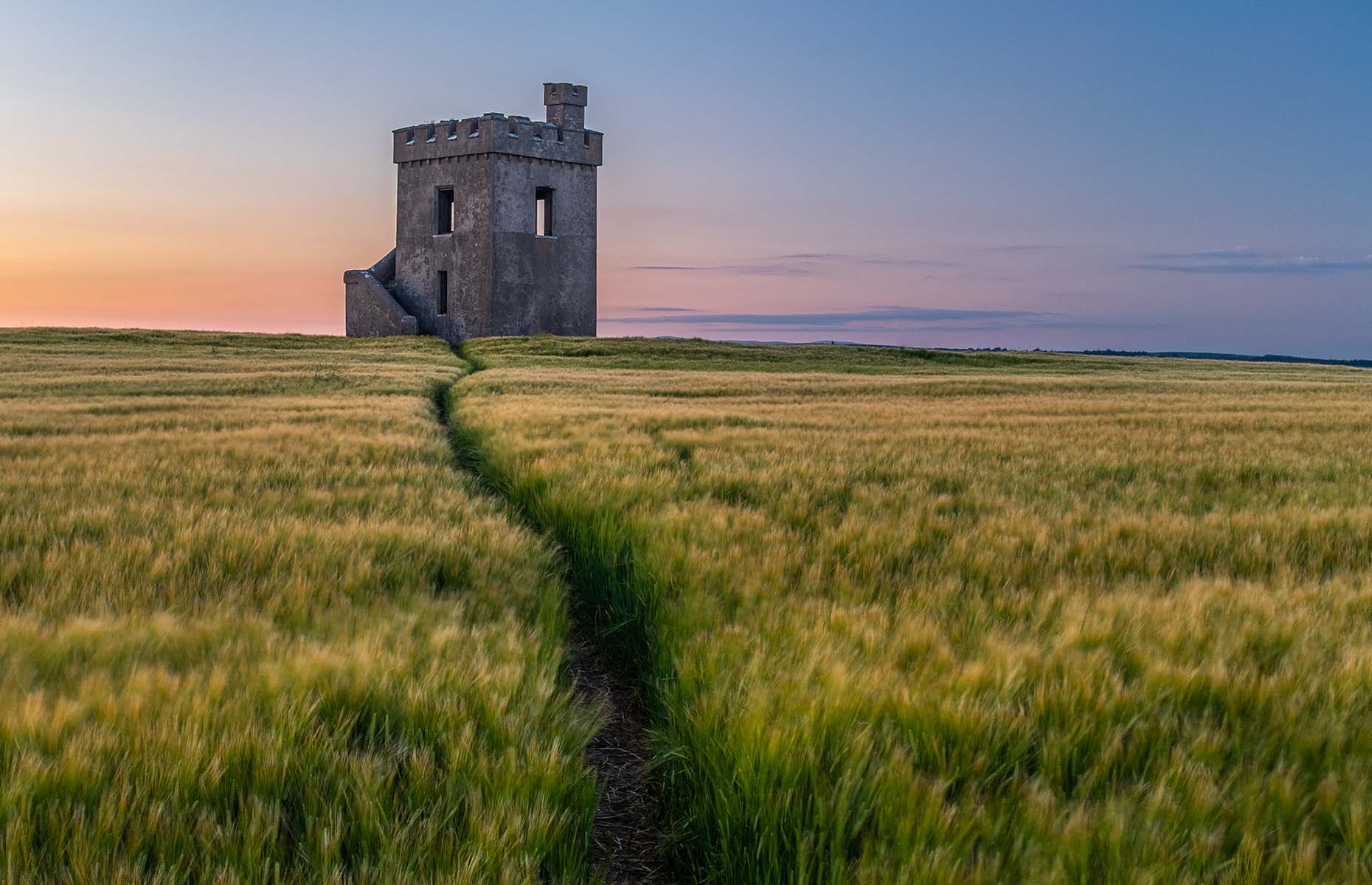
READ MORE: Ireland's most beautiful hidden treasures
Go coastal foraging
If you’ve always thought of seaweed as being the slimy green stuff to avoid on the beach, a foraging outing with seaweed expert and cookbook author Marie Power (also known as ‘The Sea Gardener’) is a revelation. With decades of seaweed foraging under her belt, Marie will show you the rockpool ropes on a wild Copper Coast beach like cliff-rimmed Garrarus, where you’ll learn to identify everything from frilly sea lettuce to kelp and truffly pepper dulse.
Rich in vitamins and minerals, iron and iodine, seaweed, Marie believes, is the secret to a long and healthy life, and she has long been on a mission to reignite the centuries-old Irish tradition of eating the stuff. You’ll soon be a convert, particularly if you sign up for a foraging session that ends with a seaweed cook-up or picnic on the beach.
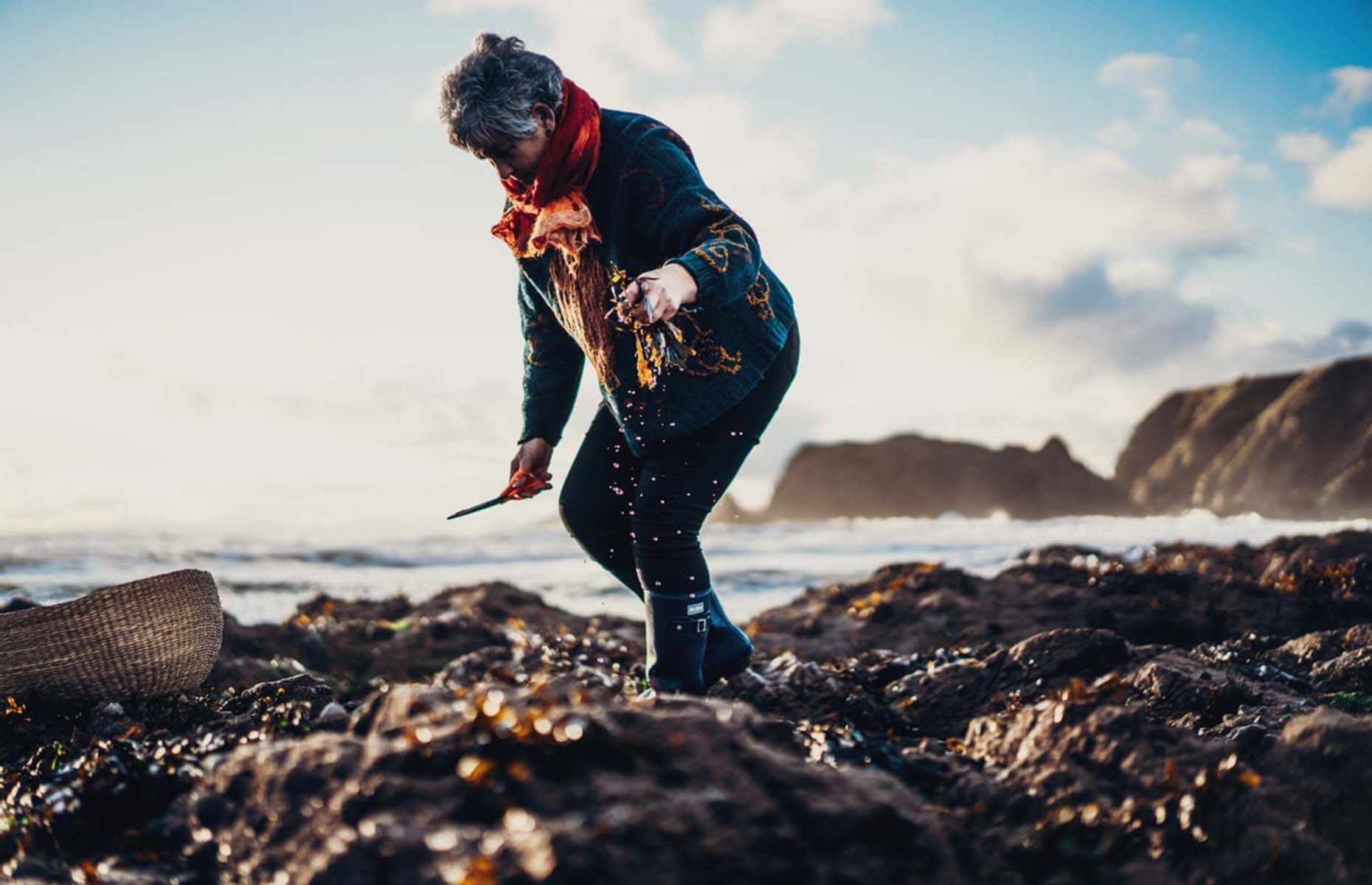
Hit the beach
The Copper Coast has some real beauties, whether you’re up for a long coastal ramble or simply want to crash on the nearest patch of sand. Many of the beaches are properly wild, with cliffs, caves and rock stacks to explore and lots of low-tide foreshore interest in the shape of rock pools and seaweeds. They even have their own brooding magic when the Irish weather misbehaves, but it’s wise to have a waterproof jacket and wellies handy.
Part of the wonder of road tripping along this coast is ducking along nameless lanes to find your own little cove without a soul in sight. That said, our favourites include Kilfarrasy and its vast arc of golden sand and gnarly rock formations (check out The Art Hand if you fancy trying your hand at sand art), dune-backed, Atlantic surf-lashed Bunmahon, nicely hidden Stradbally Cove, backed by ancient sessile oak woods, and sickle-shaped, three-mile (4.8km) long Tramore Beach.
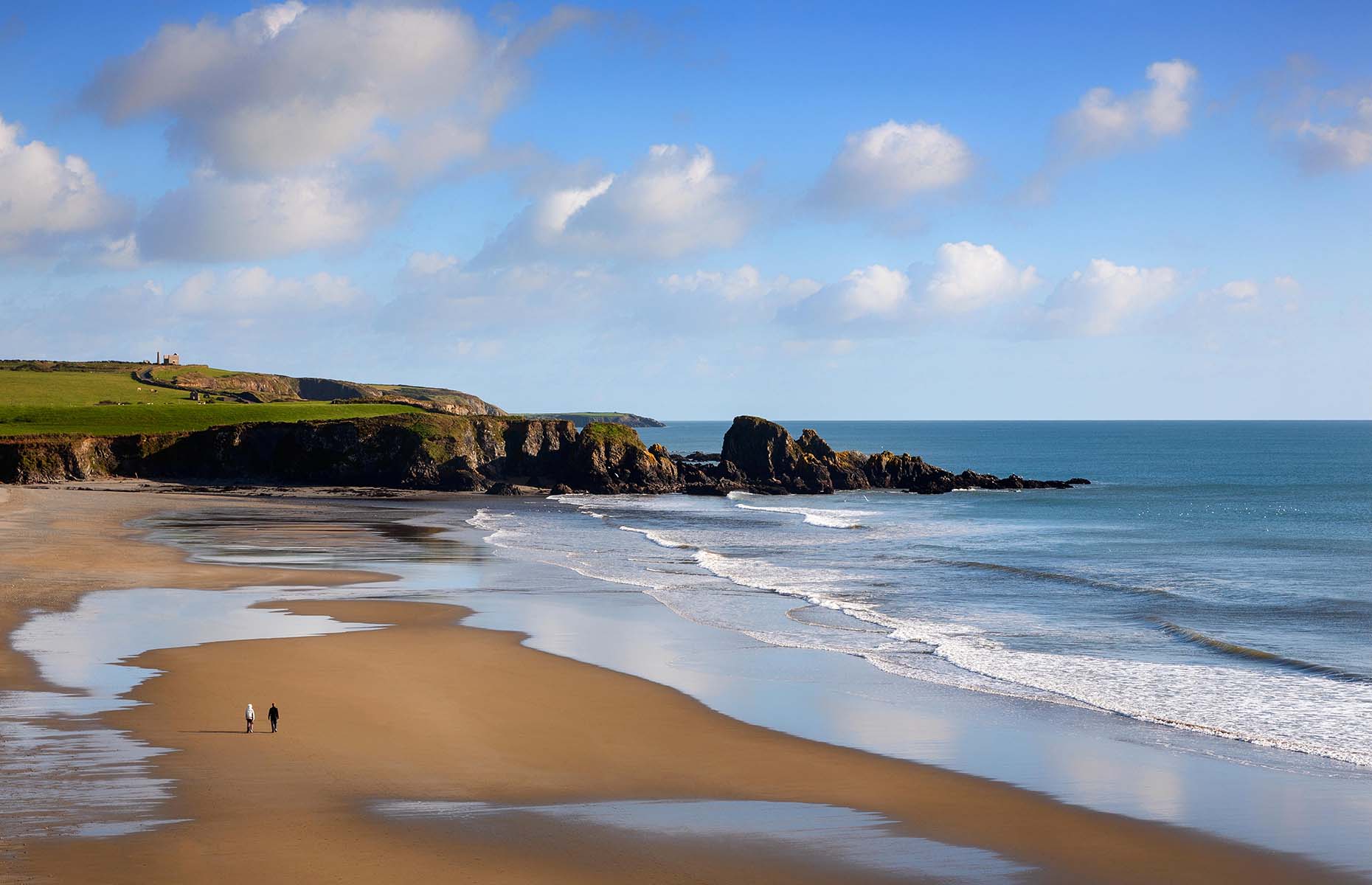
Brush up on geology
Formed 460 million years ago by volcanic eruptions near the South Pole, the Copper Coast is a geologist’s fantasy. For a primer on both the coast’s geology and its history as a 19th-century copper-mining boomtown, stop by the UNESCO Global Geopark visitor centre in Bunmahon.
Close by is the Geological Garden, where you can follow a timeline through geological history, glimpse Ogham stones inscribed with the early Christian language used by Celtic saints and see the ancient lump of basalt called the ‘cursing stone’. Lore has it that your curse will come true if you walk around it anticlockwise. Across the way are the ruined copper mines of Tankardstown that give the region its name.
For a deeper dive, grab a map to pinpoint the region’s dolmens, promontory forts and geological wonders like the Pipes of Baidhb at Knockmahon – these polygonal columns of rhyolite are the coast’s answer to the Giant’s Causeway.
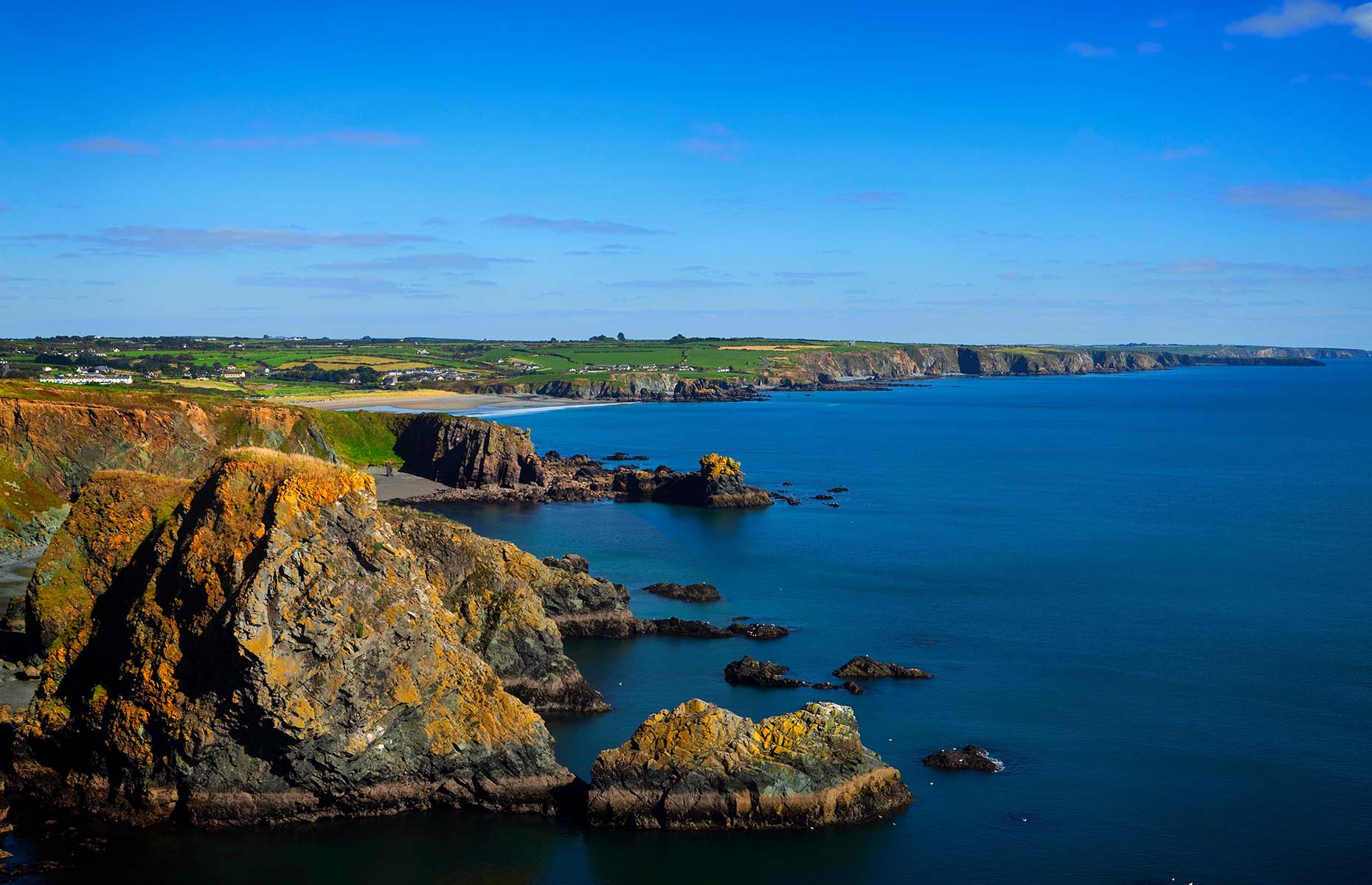
Bathe in seaweed
Even if spas aren’t usually your thing, don’t pass by the chance to bathe in one of Ireland’s traditional seaweed baths at Sólás Na Mara, or ‘Solace of the Sea’. Housed in a converted fish auction house south of the Copper Coast at lonely Helvick Head, the seaweed baths are incredibly atmospheric: you’ll be shown to your own candlelit chamber, where you can bathe like a mermaid in a cast-iron tub filled with warm seawater that’s pumped in at high tide. The locally harvested serrated or bladder wrack turns the water silky and copper coloured. You’ll leave thoroughly relaxed and with skin like a newborn.
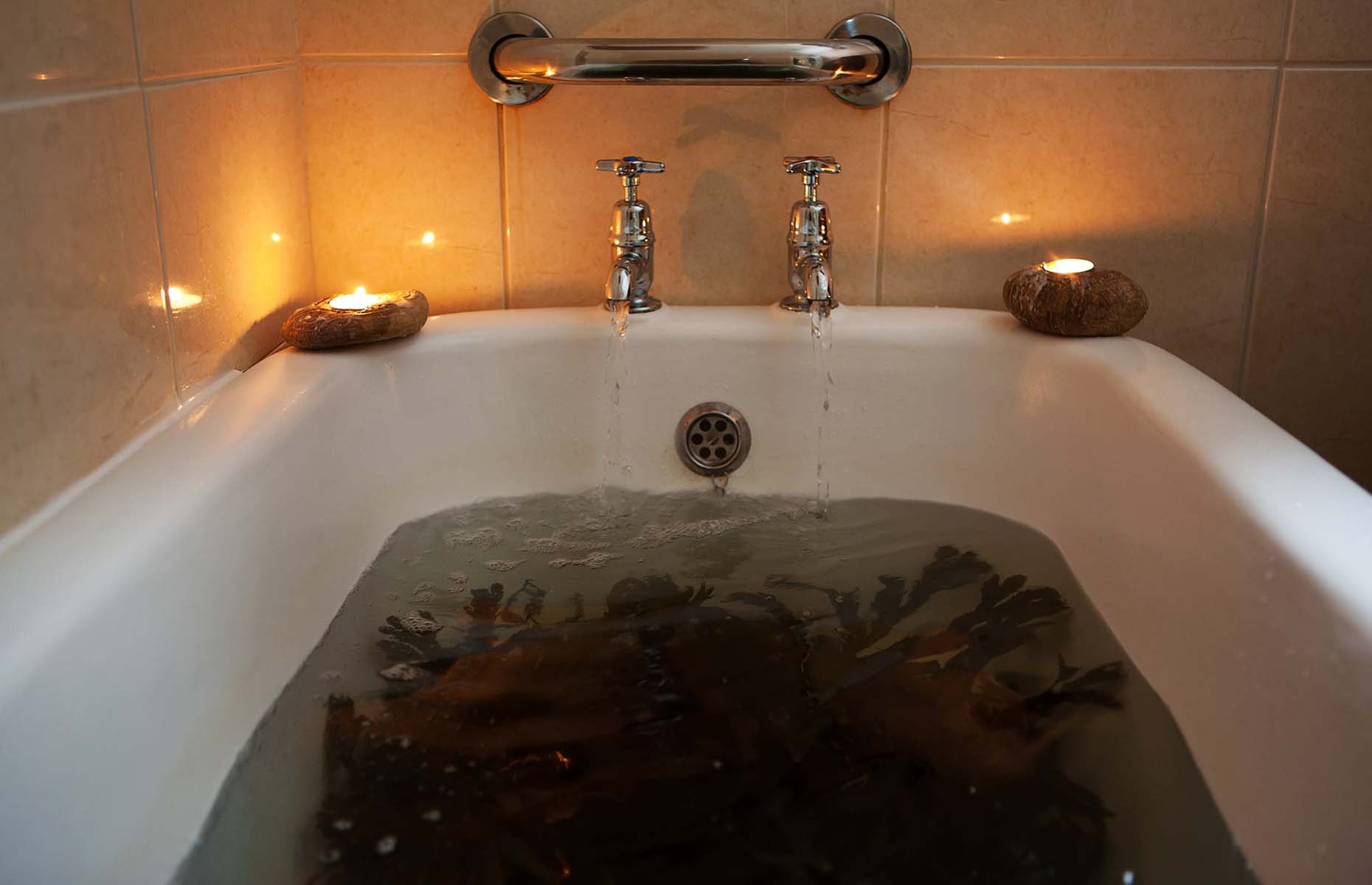
Hike the Ardmore Cliff Walk
Though technically south of the Copper Coast, the Ardmore Cliff Walk is worth the detour. When the sun’s out, it’s as though the saints themselves are beaming down on this two-and-a-half mile (4km) loop trail above Ardmore. The views of sea and sky are uplifting as you head up and over gorse-clad cliffs that plunge to the raging Atlantic, following in the footsteps of St Declan, who founded a monastery here in the AD 5th century.
Bring a bottle to fill up on holy water at St Declan’s Well at the start of the walk, then follow the path as it weaves along the ragged coast, passing the hulking remains of the shipwreck Samson and keeping an eye out for seals basking on the rocks below. The trail ends at the evocative ruins of Ardmore Cathedral and its round tower. St Declan is said to lie buried in its small oratory.
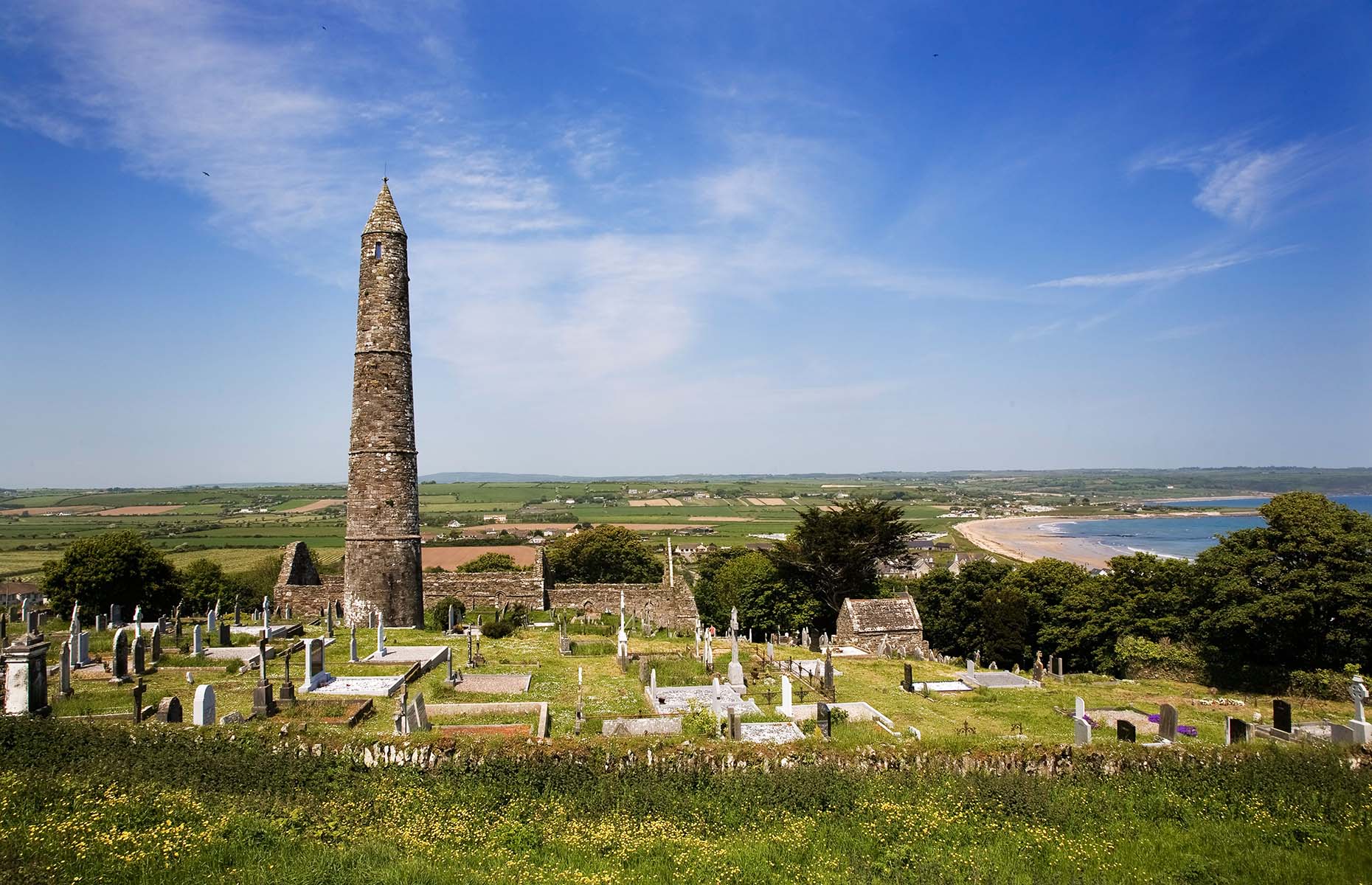
Drive the Magic Road to the Comeragh Mountains
To ramp up the drama further still, swing inland to the glacier-gouged valleys and peaks of the Comeragh Mountains, just north of the Copper Coast. If you only have time for one drive, take the ‘Magic Road’ to the Mahon Falls. Locate the fairy tree and sign (with a little help from Google or your GPS), switch off the engine and, with any luck, your car will start to go backwards uphill. Precisely why is a mystery: some say it’s magic, others – magnetic fields.
From here, follow the single-track road to the trailhead for a short, exhilarating walk over the bracken-cloaked, boulder-dotted moor to an amphitheatre of scree-clad mountains. Here a wild, 262-foot (80m) waterfall nosedives over the edge of sandstone cliffs. It’s like a scene freshly minted for Middle Earth.

READ MORE: Guide to driving Ireland's Wild Atlantic Way
Where to stay & eat
If budget is of no concern, the 5-star Cliff House in Ardmore is the dream, with cool, light-drenched interiors, wraparound Atlantic views and a stunning Michelin-starred restaurant headed up by Ian Doyle, whose passion for sustainable local ingredients and foraged finds shines.
Crew’s in Dungarvan has spacious apartments big on period charm in a restored 16th-century building. Right next door is the fabulous Tannery, where chef Paul Flynn plays up robust flavours and seasonal, regional produce in a stylishly converted leather factory.
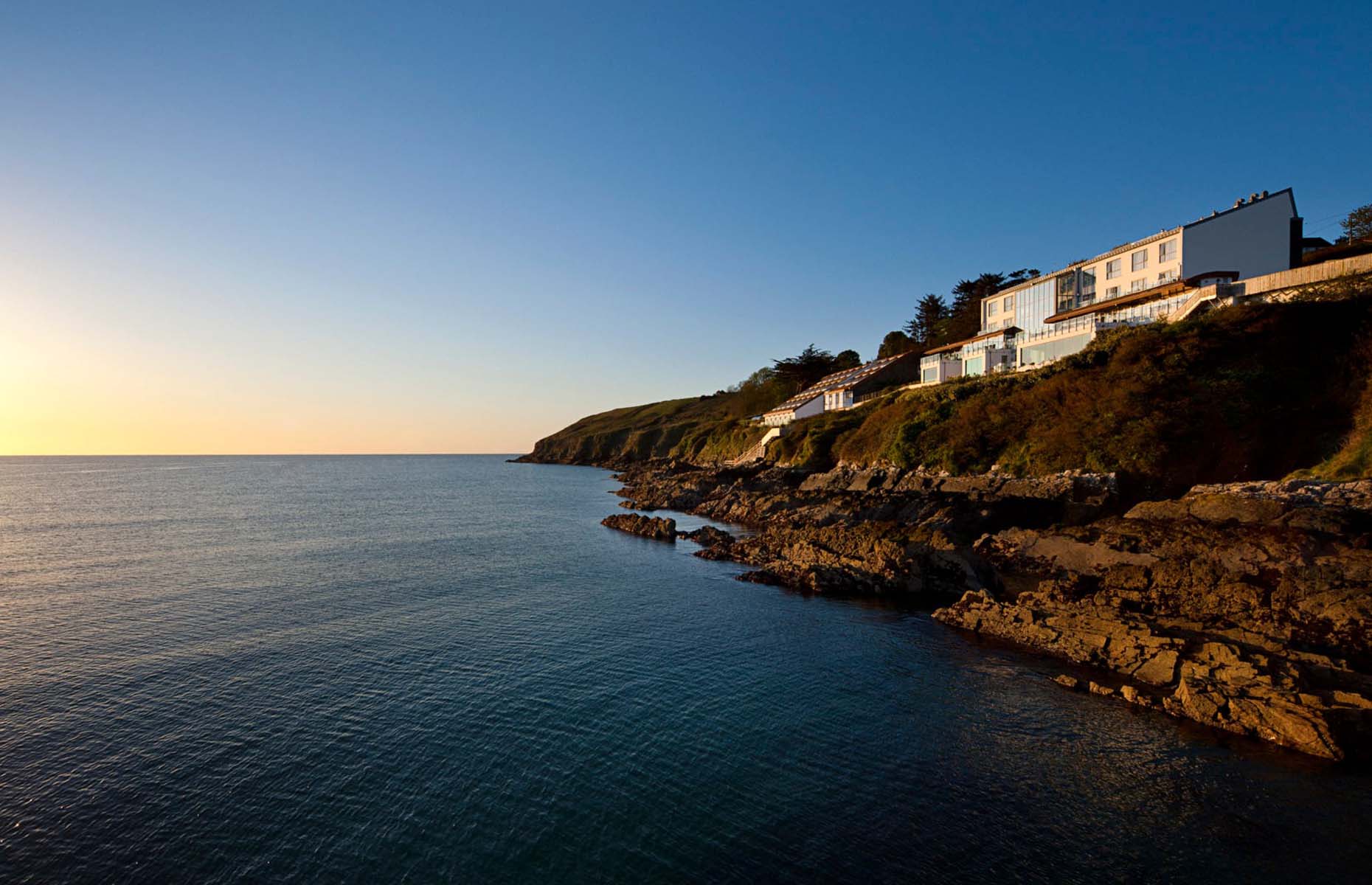
READ MORE: Why Ireland's Boyne Valley should be your next mini-break
Lead image: 4H4 Photography/Shutterstock
Comments
Do you want to comment on this article? You need to be signed in for this feature
